I have a yellow coffee mug by Mary Lincoln from Ardmore Pottery. Even on the filthiest of mornings – and I can wake up in a very foul mood – it always brings a small spark of a smile. Spending so much more time at home reminds us of the quiet importance of beloved household objects. Seven creative people share their moments of joy.
Sharon Carty
I’ve always wanted a velvet sofa. There’s something about velvet that has an understated glamour, while still being soft and cosy. And as the fabric ages well and doesn’t really date, it felt like an ideal investment for when I finally managed to buy a house. Moving home and buying a cottage over a year ago meant I could go on the hunt, after over a decade of rented apartments in Austria and Germany, when it was mostly impractical to buy anything other than flatpack furniture.
I found it in London, shortly after having the offer on the house accepted. I wasn’t really looking at the time but I had one of those “I’ll know it when I see it” moments. It was love at first sit! My house is quite small, and I didn’t fully trust my calculations in figuring out whether it would fit in the door. The perfectionist in me went as far as making a full-size model out of cardboard – thankfully proving my calculations correct.
The pandemic complicated matters. With most of my singing work cancelled, it took months of saving and, as the crisis shut down the furniture company’s export wing, I had to get creative with getting it delivered from London. But it was worth it and I’m really looking forward to being allowed have friends and family over to enjoy it post-pandemic.
Mezzo-soprano Sharon Carty is currently curating an online event for Kaleidoscope
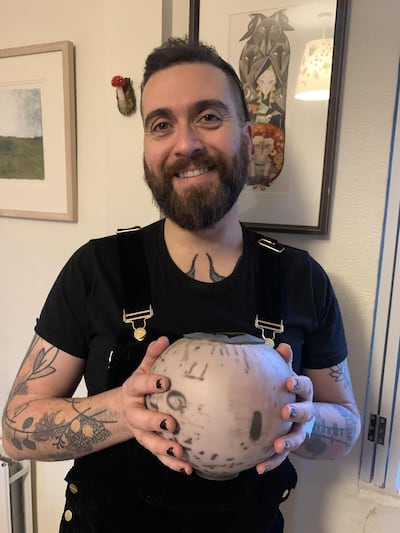
Tomm Moore
It’s a piece of ceramics. My wife Liselott [Olofsson] is a ceramic artist, and it’s from her graduation show – nearly 21 years ago. We had met before college, at Young Irish Film Makers. Then she went to NCAD, and I went to Ballyfermot [college]. She mostly sold out her degree show, but I salvaged this piece.
It’s a bit forgotten in the house where pride of place is given to her new work. It’s in my drawing room – not a fancy drawing room, but the little room where I draw. I have a nice arrangement of things among the paints that I like to look at when I’m looking up for inspiration.
It’s purpley-grey, Raku fired, and I had a hand in making it. At least I think I did. I helped, but I can’t say if it’s this exact piece. Raku is an art form of attrition. It’s what survives. You get the piece out of the red-hot kiln with a tongs, and quickly bury it in a bin full of sawdust. It’s hot and fast, and it’s the furthest thing from quietly drawing.
It’s there with a collection of things that have different meanings, in and of themselves. This takes me back to the early days; like sometimes, when she comes in with her overalls on, and a bit of clay or dust in her hair.
Tomm Moore is co-founder of Cartoon Saloon and director of Wolfwalkers.
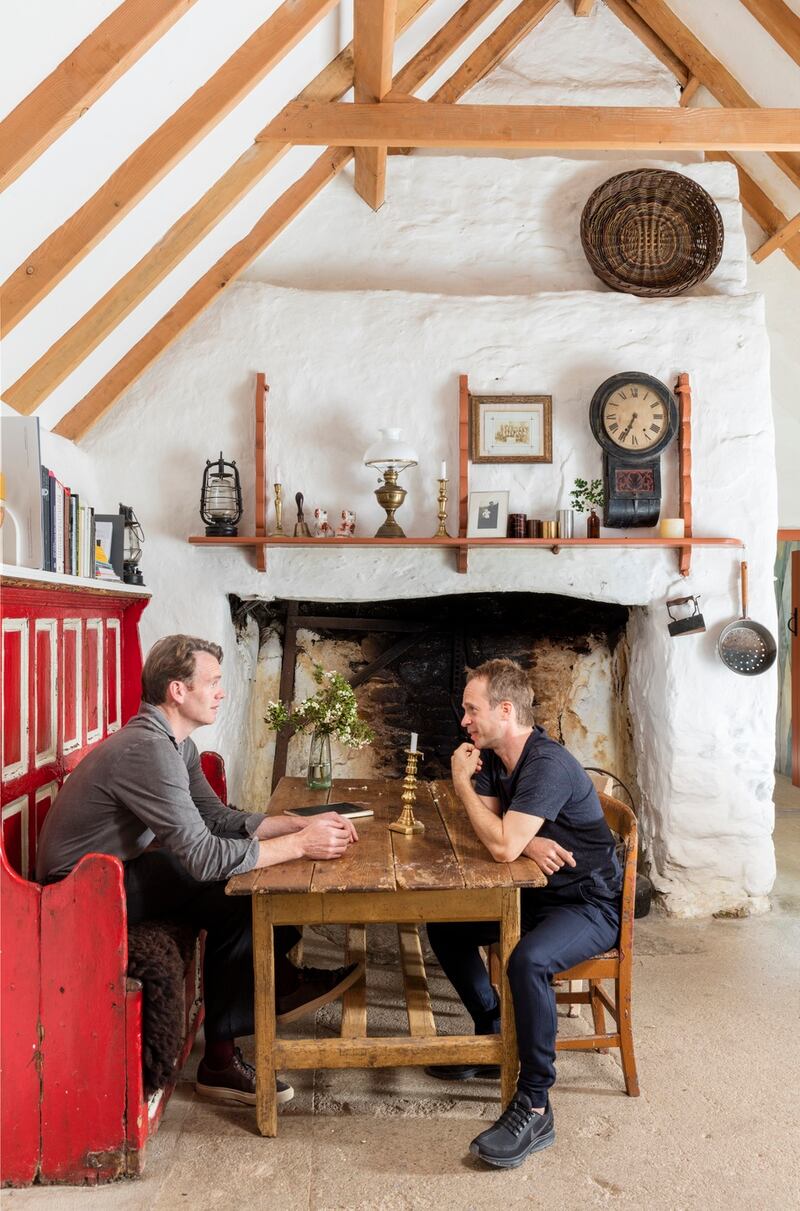
Joseph Walsh
I lived with my grandfather, who was born in 1898, on and off during his final years. I thought I was taking care of him and he thought he was taking care of me. His favourite place was sitting on this settle close to the fire. It was during that time that I started to develop an interest in furniture, I loved these vernacular pieces, even then.
The first piece I made in 1992 was a copy, or an interpretation of the farmhouse dresser. Then I discovered Claudia Kinmonth’s book of traditional furniture, [Irish Country Furniture and Furnishings] and I loved how intelligent the designs were, versatile, multi-purpose and innovative while still having an aspirational quality of design and decoration. The settle is a perfect example of that, the seat would have hinged out, opening into a sleeping box within for a visiting guest.
I think we can still learn a lot from vernacular furniture about the issues we are facing today. These pieces represent sustainability, they represent culture and connection to people and place. A few years ago the house was damaged by fire, and Stuart Ahern restored the furniture from the farmhouse. He really enjoyed finding the lines from the makers, marking gauge on the joinery, and comparing decisions at that time to his approach now.
Today it is a favourite object of mine, and of many that come here. It has been the meeting place of new team members, clients and other visitors. It seems impossible, but it truly is a comfortable place to sit. For me the settle is treasure.
Joseph Walsh makes furniture and sculptural pieces at his studio in Riverstick, Co Cork
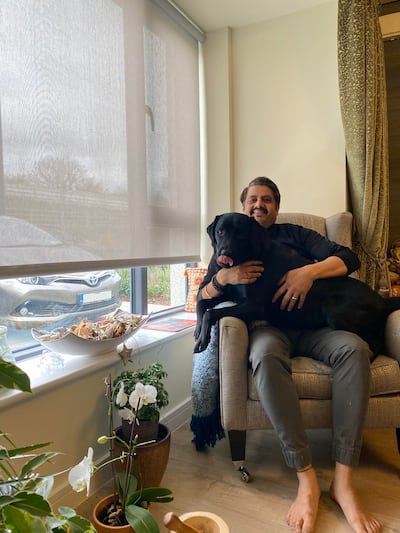
Sunil Ghai
In India, we have a tradition of having a chair for the oldest member of the family. We call it “the chair for the elderly person”, so I was thinking of my father coming to visit when we bought this wing chair. But he passed away in May, when the lockdown was there. The restaurant was closed. Everything was closed. I spent so much time in that chair. Losing my father and not being able to go to the funeral; I never thought that would happen.
But we cherish the good moments as well, and I wanted somewhere to sit, to read my books and talk on the phone to my family in India. It has a lovely view of the garden. It came from the 1933 Furniture Company in Navan, it’s very comfortable and my dog, Junior, loves it too. I had dogs in India but this is my first in Ireland, he’ll be three in May.
He’s so bad, he climbs up into my lap. He doesn’t care how uncomfortable I am. And if he’s sitting here, he won’t let me join him. We’re doing takeaway at all the restaurants, and that is keeping me very busy. But it’s so disheartening to see the empty tables and chairs in the restaurants. I’m still dreaming that one day soon they will be full again.
Chef Sunil Ghai owns Pickle, Street and Tiffin restaurants
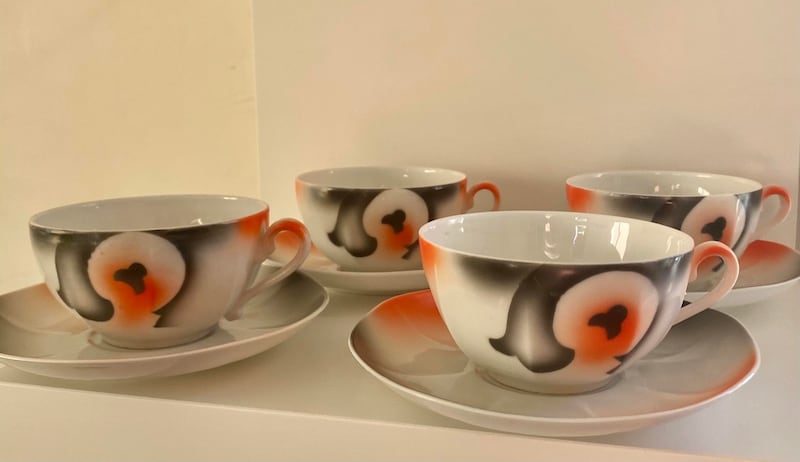
Annie Fletcher
I had been living in the Netherlands, and I have a cup and saucer, part of a set that I picked up in a flea market there. I love it. Even though my partner and I have been together for 25 years, the only thing we really have in common is our love for flea markets. They have such good ones in the Netherlands, so this piece brings back memories of happily browsing together.
The cups are tiny, porcelain and super-delicate. It feels quite small, like you could almost crush it in your hand. Amazingly they have all survived. The stamp on the bottom says they’re from Czechoslovakia, but that’s all I really know about their provenance.
They’re spray-painted with orange and black, colours I love, and they’re evocative of a kind of mid-European abstract modernism. I moved from Eindhoven, which is a brilliant city for design, and they remind me of what I miss, and of the Dutch obsession with coffee. They drink coffee with everything, including lunch and dinner. The cups are not quite big enough for me to use every day, I need gallons of coffee to get going. So I have them in a cabinet, where I can see them. They just make me really happy.
Annie Fletcher is director of the Irish Museum of Modern Art
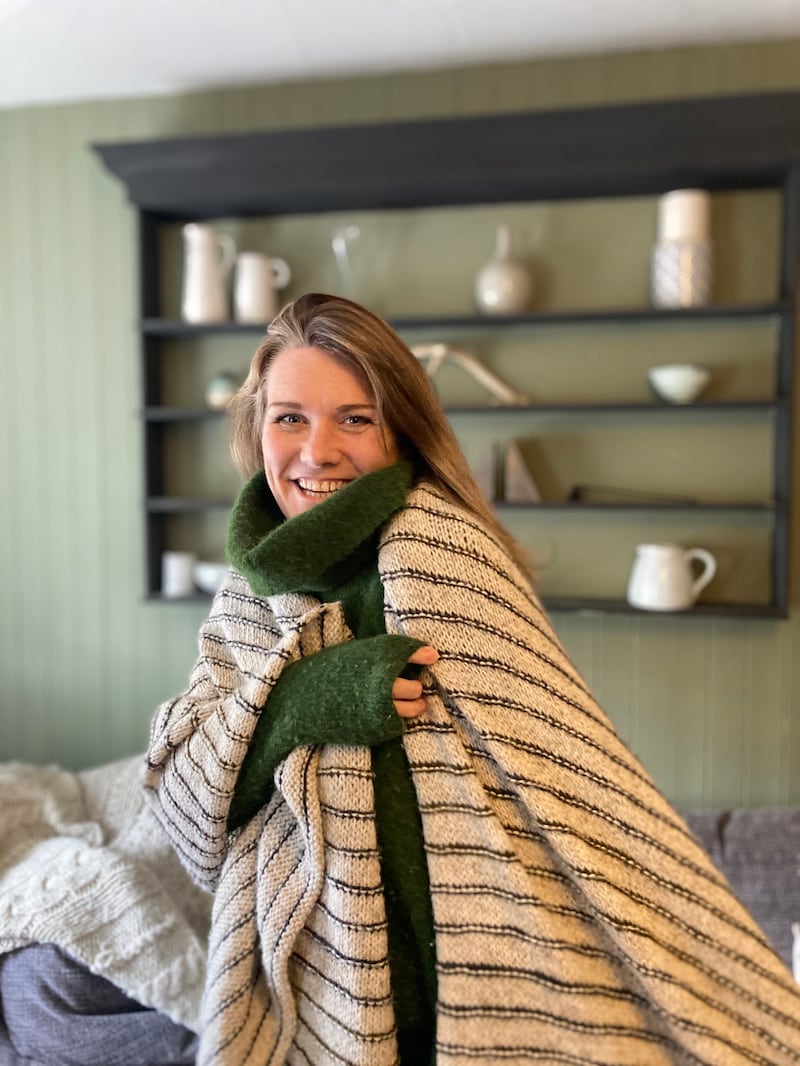
Emily Connell
Sometimes you need a hug when things get tough, and there’s something about this blanket that always gives me comfort when I need it most. It’s a Donegal heather wool blanket, hand knit by Helle Helsner, from just down the road from where I live in Ballinspittle.
Unlike any of the other functional items in my home, it has no fixed abode. It travels with me and its use changes depending on my needs. At times it’s a beautiful blanket at the end of the bed. On those days, when the sun barely reaches inside our tiny bedroom window, my blanket makes me feel warmer just by looking at it – I find it incredibly beautiful.
I also truly believe it has medicinal properties. Once, when I took to my bed with a bad cold (a very rare event for me), I covered myself up with my duvet, with the blanket on top – and 12 hours later, up I got, feeling completely cured.
I believe it’s really important to surround yourself with things you enjoy looking at, that mean something to you, and give you pleasure when you use them. You don’t always get it right, but spending so much more time at home these days has reminded me of how important it is to love the things around you. They bring joy. This blanket is all that. I love touching it, I love using it, it evokes a sense of protection. A giant, medicinal, beautiful handknit hug.
Emily Connell owns Chalk & Easel in Ballinspittle, west Cork
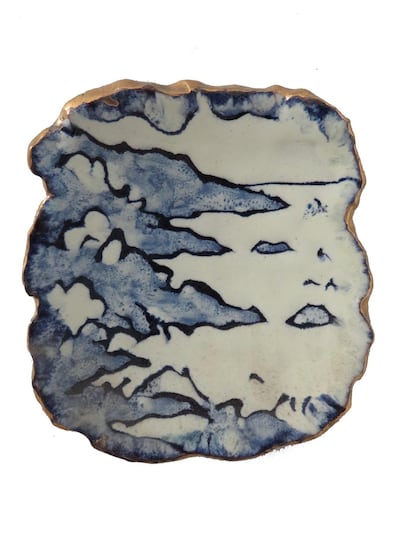
Des Doyle
Months of lockdown have focussed many of us on the comforts of home and our gardens. We’re realising that having a garden provides an escape, and a respite from doom-laden news, a place to sit, grow plants and get engaged with nature on an intimate level.
In addition to my garden, I have re-learned to love some things in the house that I have had for a long time. I am a fan of west Cork-based ceramist Cormac Boydell’s work. As a former geologist, he has a maverick take on how to get clay to do wonderful things. Each piece is different, and he is brave with form. Each piece is hand built and with just the right amount of nuance, tempered with an exciting use of colour.
In this piece there are images of Skellig Michael in monochrome, a nod to willow pattern in blue, white and gold lustre. He also uses Buddhist imagery from the Dzogchen Beara Buddhist centre which is close to his studio. His scenes conjure dream-like imagery of cliffs, roaring seas and endless skies. Magic!
Des Doyle is a garden designer specialising in sustainable gardens.



















